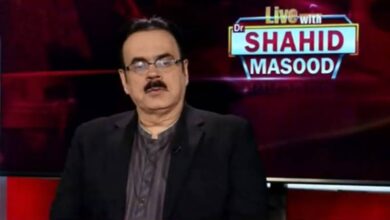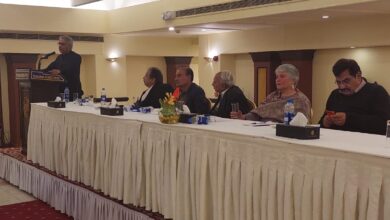Threats, attacks against Pakistani journalists jump by more than 60%, reveals Freedom Network annual report

ISLAMABAD – At least 140 cases of threats and attacks against journalists, media professionals and media organizations were reported in Pakistan between May 2022 and March 2023, according to Freedom Network’s annual Pakistan Press Freedom Report.
The report, which is released in connection with the World Press Freedom Day marked globally on May 3 every year, notes that the country’s media environment became riskier and more violent in recent months. The data shows that press freedom violations jumped to 140 in 2022-23 from 86 in 2021-22, indicating an annual increase of around 63 per cent.
“The escalation in violence against journalists is disturbing and demands urgent attention,” said Iqbal Khattak, the Executive Director of Freedom Network, the media rights organization that tracks press freedom violations around the year and publishes the annual report, which also documents the killings of at least five journalists in Pakistan in the period under review.
“Attacks on independent journalism block access to essential information, which is especially damaging during the ongoing political and economic crises when the public needs reliable news to understand the issues and respond to them,” Khattak said.
“It is ironic that Pakistan in 2021 became the first country in Asia to legislate on safety of journalists but one and a half years later the federal and Sindh journalists’ safety laws have not helped a single journalist resulting in the increasing violence against them,” Khattak said.
He said Freedom Network urges Prime Minister Shahbaz Sharif to urgently fulfil his promise made at an international conference in Islamabad on November 2, 2022, marking the international day to combat impunity of crimes against journalists, to notify the safety commission required under the federal Protection of Journalists and Media Professionals Act 2021 so the law passed with bipartisan support by national parliament can start helping journalists. The commission’s absence continues to promote impunity of crimes against journalists.
He also urged the Sindh government of Chief Minister Murad Ali Shah to equip its notified provincial safety commission under the Sindh Protection of Journalists and Other Media Practitioners Act 2021 with resources so that under the chairmanship of distinguished jurist Rasheed Rizvi it can help journalists and thereby empower them to combat the impunity of crimes against journalists in the province.
The key findings of the report are:
One press freedom violation every third day: At least 140 cases of threats and attacks against journalists, other media professionals and media institutions were documented in the 11 months between May 1, 2022, and March 31, 2023, across all territories of Pakistan. This is an average of around 13 cases a month or at least one violation every three days compared to one every five days in 2021-22.
Assault, threats and physical attacks form majority of violations: The main types of violations against the journalists were 51 cases (36 per cent) of assault, 21 cases (15 per cent) of attacks that resulted in damage to equipment, homes of journalists or offices of news organizations, and 14 cases (10 per cent) of offline or online threats, including seven death threats. Together these three types of violations accounted for nearly 60 per cent of the total 140 cases.
Islamabad most dangerous region for journalists: Overall, Islamabad emerged as the riskiest place to practice journalism in Pakistan with 40 per cent of the violations (56 out of total 140 cases) recorded there. Punjab was second worst with 25 per cent of the violations (35 cases) and Sindh a close third at 23 per cent (32 cases).
TV journalists most frequently targeted: TV was the largest victim medium with at least 97 (69 per cent) of the 140 cases against its practitioners. The second most targeted medium was print with 26 journalists targeted (19 per cent) while digital journalists were attacked or threatened in 15 cases (11 per cent).
Political parties among leading threat actors: Allegedly the biggest single-source threat actor targeting media was political parties, which were suspected by victim journalists or their families in 21 per cent of the 140 cases. Equally troublingly, state functionaries were a close second, with suspected involvement in 19 per cent of the total cases. The remaining two significant threat actors were multisource categories. These were the miscellaneous ‘Others’ (including private individuals etc.) with 27 per cent cases attributed to them and the multisource ‘Unknown’ with 24 per cent cases.
Violence against women journalists: Women media professionals, including one transgender woman journalist, were targeted in at least eight cases. One woman journalist was killed during the coverage of a political rally. Other forms of violence reported against women journalists included assault leading to injury, digital threats and offline threats of physical harm.





